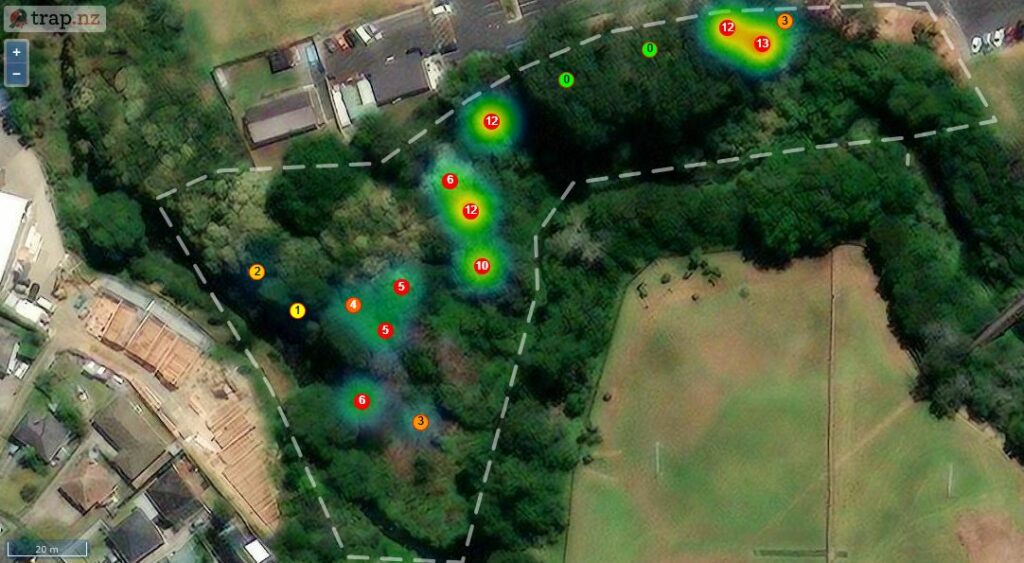To our school community, “Kua hinga he tōtara i te wao nui a Tane.” “A…

To support our planting programme for the school awa Waitītiko, Paula Marx our school Development Manager decided to set up a pest trapping programme. If our programme is successful we will see our thriving biodiverse bush area return, including taonga birds who only exist in Aotearoa, such as kereru, kākā and ruru. And what a success the programme has been! To date we have removed 94 rodents from the bush area and nearly 30 students have learnt best practise trapping techniques.
Fourteen traps were laid alongside the awa last August. This heat map shows the location of the traps and how many catches each trap has made.

There is a strong focus on humane trapping and being respectful of the animals, in line with Predator Free 2050 values. To support this we use “Victor Pro Traps” as they have passed all test specifications and are humane traps. All our data is entered into Trap NZ, which is used by many environmental groups and DOC and helps capture the big picture of the trapping happening all around NZ. In June with the support of Urban Ark we also installed three possum traps.
We need your help
From the beginning of this year we have faced an issue where someone is setting off the traps each week. By tampering with the traps and allowing the pests that predate our native species to overrun the bush, we are endangering the ability for our natives to thrive and even survive. It is the rodents or the birds, so please help us control the rodents and do not tamper with traps. If you have any informatin on who is tampering with the traps email it to marxp@wsc.school.nz.
According to the Ministry of Environment, “Rats prey on indigenous birds, reptiles and invertebrates. They have caused the decline or extinction of many of our native insects and lizards. Along with mice they affect the regeneration of some plants by eating seeds and seedlings. Possums eat large quantities of indigenous vegetation and prey on invertebrates and birds. They are the major cause of loss of forest canopy health and can cause major changes in the species present in native forests.”
affect the regeneration of some plants by eating seeds and seedlings. Possums eat large quantities of indigenous vegetation and prey on invertebrates and birds. They are the major cause of loss of forest canopy health and can cause major changes in the species present in native forests.”







